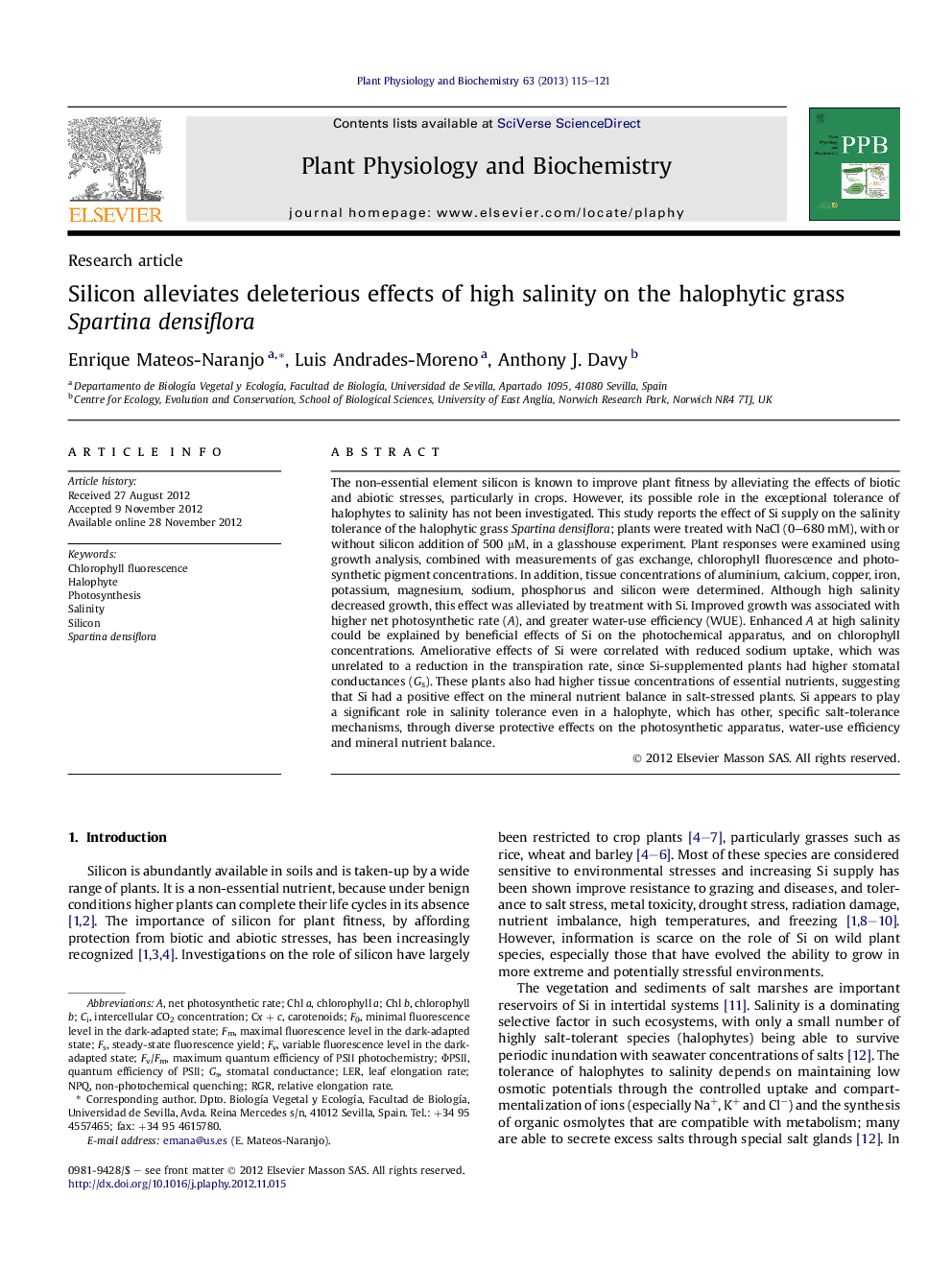| Article ID | Journal | Published Year | Pages | File Type |
|---|---|---|---|---|
| 2016054 | Plant Physiology and Biochemistry | 2013 | 7 Pages |
The non-essential element silicon is known to improve plant fitness by alleviating the effects of biotic and abiotic stresses, particularly in crops. However, its possible role in the exceptional tolerance of halophytes to salinity has not been investigated. This study reports the effect of Si supply on the salinity tolerance of the halophytic grass Spartina densiflora; plants were treated with NaCl (0–680 mM), with or without silicon addition of 500 μM, in a glasshouse experiment. Plant responses were examined using growth analysis, combined with measurements of gas exchange, chlorophyll fluorescence and photosynthetic pigment concentrations. In addition, tissue concentrations of aluminium, calcium, copper, iron, potassium, magnesium, sodium, phosphorus and silicon were determined. Although high salinity decreased growth, this effect was alleviated by treatment with Si. Improved growth was associated with higher net photosynthetic rate (A), and greater water-use efficiency (WUE). Enhanced A at high salinity could be explained by beneficial effects of Si on the photochemical apparatus, and on chlorophyll concentrations. Ameliorative effects of Si were correlated with reduced sodium uptake, which was unrelated to a reduction in the transpiration rate, since Si-supplemented plants had higher stomatal conductances (Gs). These plants also had higher tissue concentrations of essential nutrients, suggesting that Si had a positive effect on the mineral nutrient balance in salt-stressed plants. Si appears to play a significant role in salinity tolerance even in a halophyte, which has other, specific salt-tolerance mechanisms, through diverse protective effects on the photosynthetic apparatus, water-use efficiency and mineral nutrient balance.
► A strongly halophytic grass, Spartina densiflora, was investigated. ► Silicon ameliorated adverse effects of high NaCl on the growth even in a halophyte. ► Si also increased net photosynthesis and water-use efficiency under salt stress. ► Si had beneficial effects on photochemical apparatus and chlorophyll concentrations. ► These effects were linked with improved nutrient balance and reduced Na uptake.
